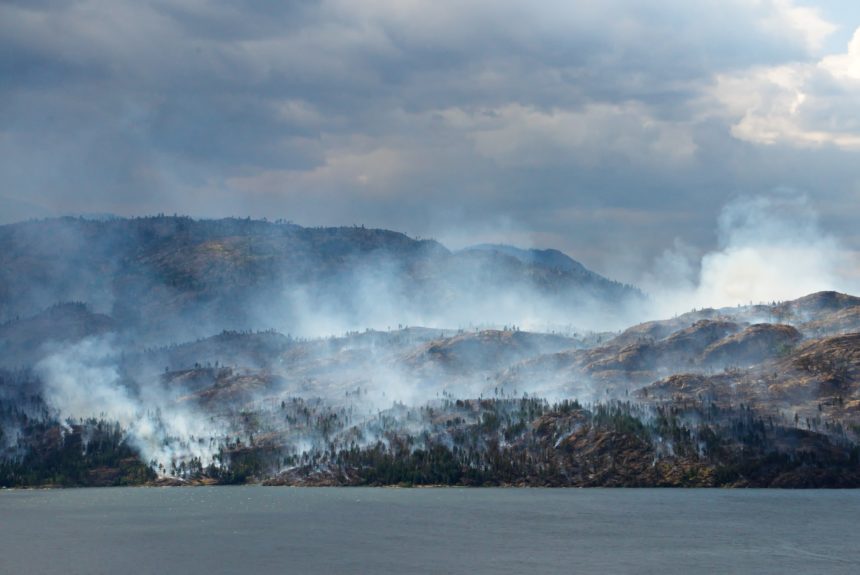A new report from the United Nations projects that land use change and climate change will worsen wildfire risk 30 percent by 2050. Climate change is one of many factors that increase the economic and environmental dangers of wildfires. As the report emphasizes, a “complex interaction of biological, meteorological, physical, and social factors” influence the frequency and intensity of wildfires and the duration of wildfire seasons. Similarly, the solutions to reduce the risk and costs of wildfires are multifaceted and require active wildfire prevention and longer-term mitigation tools.
>>>READ: Investing in America’s Forest is Key to Wildfire Prevention
The severity of wildfires and wildfire risk depends on several factors. A warming planet has disparate effects on regions around the world, and a hotter and drier climate lengthens wildfire seasons. While the most extreme climate futures are becoming increasingly improbable (see page 37 of the report for different trajectories), even more moderate warming will increase fire weather. A November 2021 study in the National Academy of Sciences examined the increase of fire weather in the western United States (measured by an increase vapor pressure deficit or the amount of moisture in the air) and observes that one-third of the increased deficit trend is due to natural variability and two-thirds is due to human activity. Jet stream behaviors also influence the severity of wildfires.
Population growth and people moving near forests increases the potential for humans to cause wildfires but also increases the risk to peoples’ lives and livelihoods. A National Academy of Science research paper notes, “The wildland-urban interface (WUI) is the area where houses and wildland vegetation meet or intermingle, and where wildfire problems are most pronounced. Here we report that the WUI in the United States grew rapidly from 1990 to 2010 in terms of both number of new houses (from 30.8 to 43.4 million; 41% growth) and land area (from 581,000 to 770,000 km2; 33% growth), making it the fastest-growing land use type in the conterminous United States. The vast majority of new WUI areas were the result of new housing (97%), not related to an increase in wildland vegetation.” Restrictive housing policies that drive up the costs of living in urban and suburban areas can push people into the wildland-urban interface.
A more immediate priority to reduce the risks and severity of wildfires should be to address live fuel or the fuel load. The fuel load is anything from grass, shrubs and small trees to dead leaves and materials on the forest floor. A full fuel load causes the fire to move up the tree and across the canopy, increasing its intensity and making it far more difficult to contain. A study of wildfire drivers in the western U.S. from 2002-2015 found that live fuel was by far the largest driver (53.1 percent average relative influence). Controlled burns and timber harvesting reduces the fuel load significantly.
Part of the problem, as evidenced by the UN report, is that much more funding goes to wildfire response than planning and prevention. Part of that is explained by the fact that responses are much more costly than prevention; however, governments should divert more attention and resources toward prevention. Encouragingly, the Biden administration is doing just that. In the Forest Service’s “Confronting the Wildfire Crises” report, the administration calls for $50 billion over 10 years “to more than double the use of controlled fires and logging to reduce trees and other vegetation that serves as tinder in the most at-risk areas.” The Infrastructure Investment and Jobs Act signed into law last November allocates $3 billion over five years to wildfire prevention.
While additional funding is critical, modernizing regulations will stretch those dollars further and make prevention activities far more effective. Improving permitting barriers and limiting excessive lawsuits will empower forest managers and timber harvesters to restore forests to a healthier state in a timelier fashion. Shawn Regan, vice president of research at the Property and Environment Research Center, discusses how onerous regulations and activists blocked preventative projects:
A recent investigation by the Sacramento Bee describes how anti-logging activists often abuse federal laws such as the National Environmental Policy Act and Endangered Species Act to stall forest-thinning projects, despite broad recognition from fire scientists and conservation groups that such activities are needed. Activists held up a 9,000-acre thinning project in California for a decade over concerns that it would harm endangered spotted owls, only to see the area burn in a fire last year that destroyed the birds’ habitat. One woman’s lawsuit over another California forest-thinning project forced the government to process 19,193 pages of paperwork. The project remains in limbo today.
Furthermore, controlled burns must meet federal, state, and local air quality standards, which limits the days for forest managers to conduct them. Of course, a wildfire will significantly worsen air quality and increase greenhouse gas emissions so the tradeoff of foregoing wildfire prevention could result in a far inferior environmental outcome.
The Biden administration recognizing that active forest management will reduce wildfire risks is a positive development. Congress providing $3 billion in funding toward preventative treatment is another positive development. Now it’s time for policymakers to roll up their sleeves and do the tough work of cutting red tape so that forest managers can carry out these activities effectively and expeditiously.
The views and opinions expressed are those of the author’s and do not necessarily reflect the official policy or position of C3.
